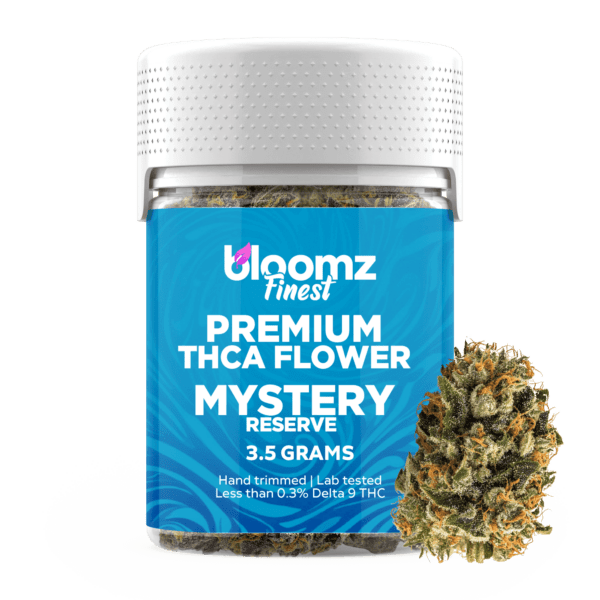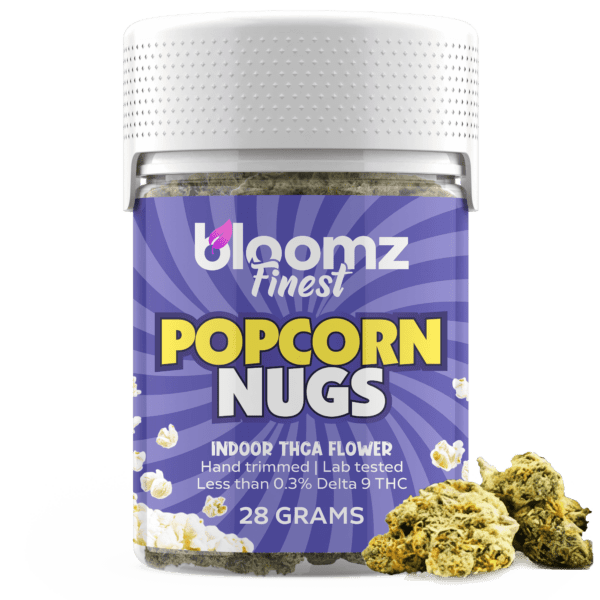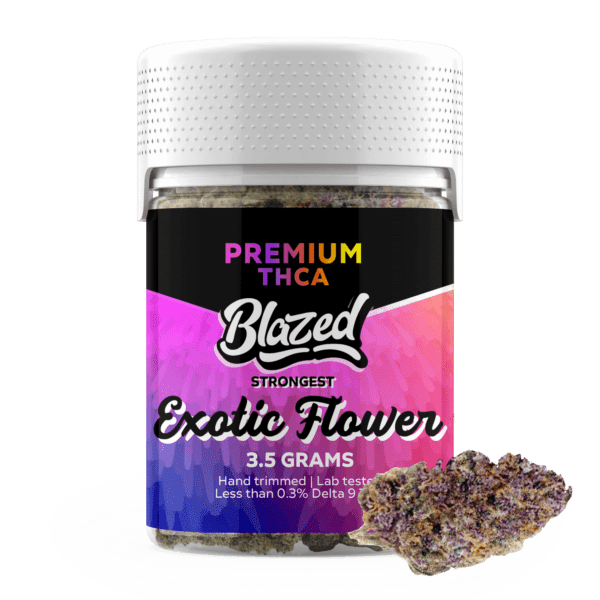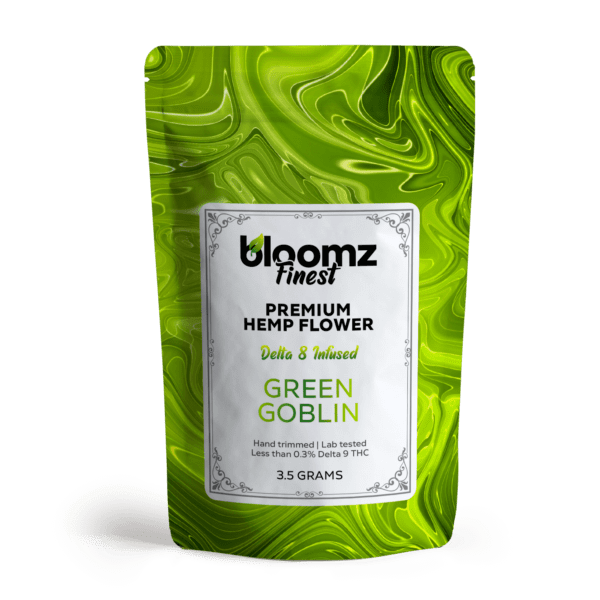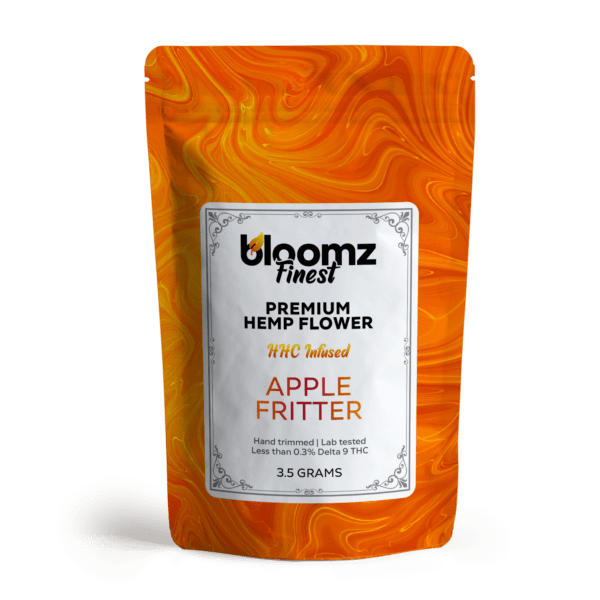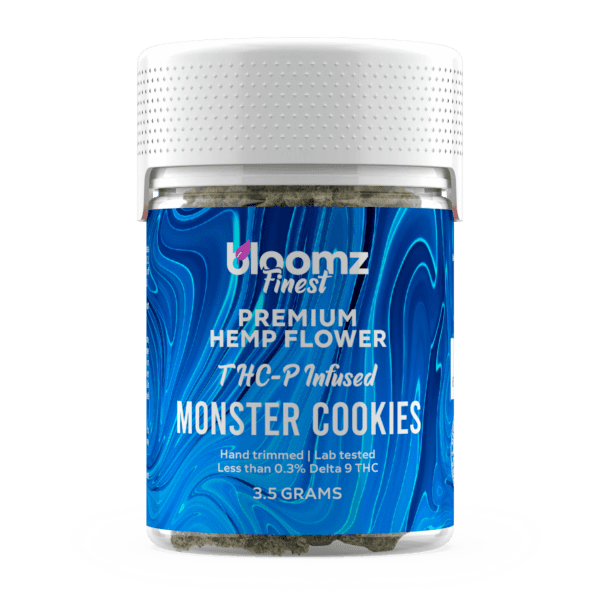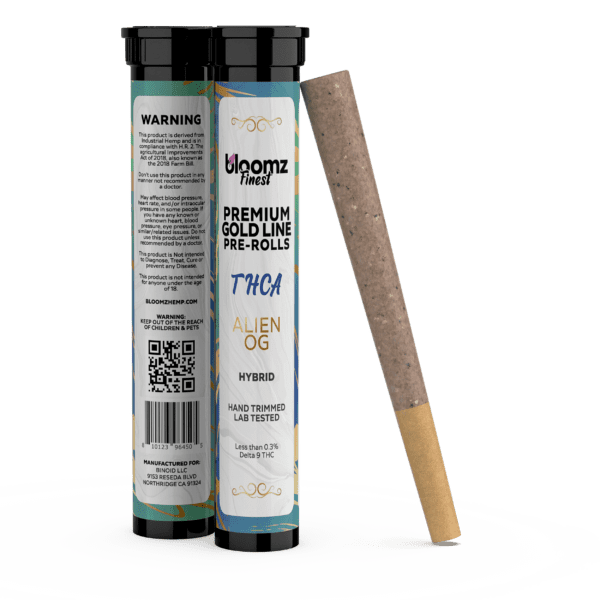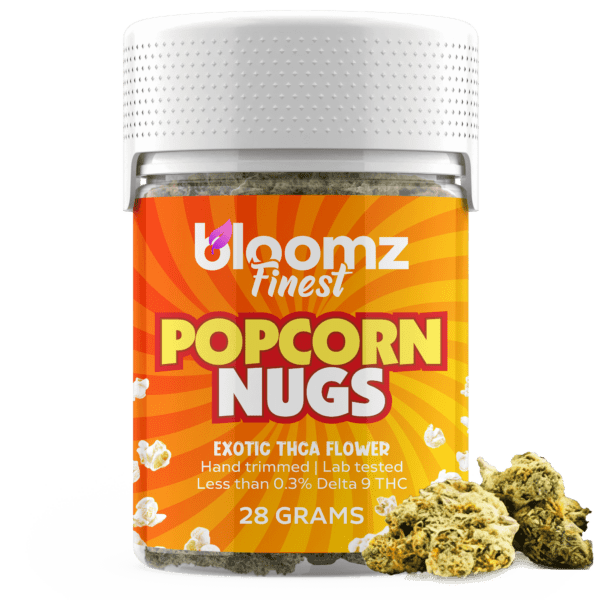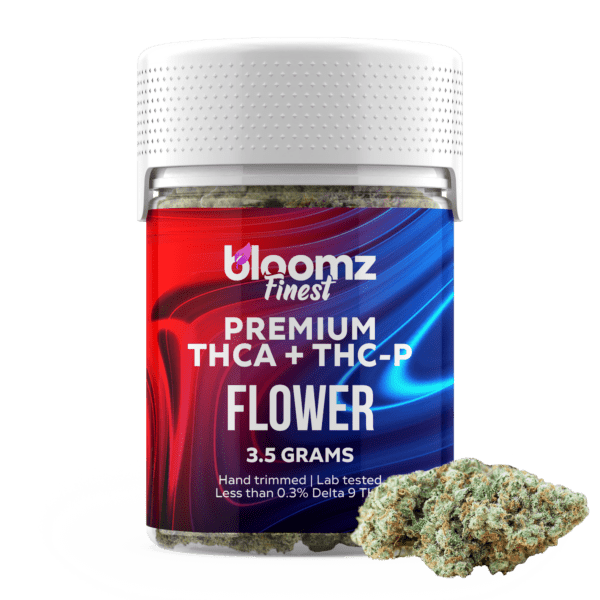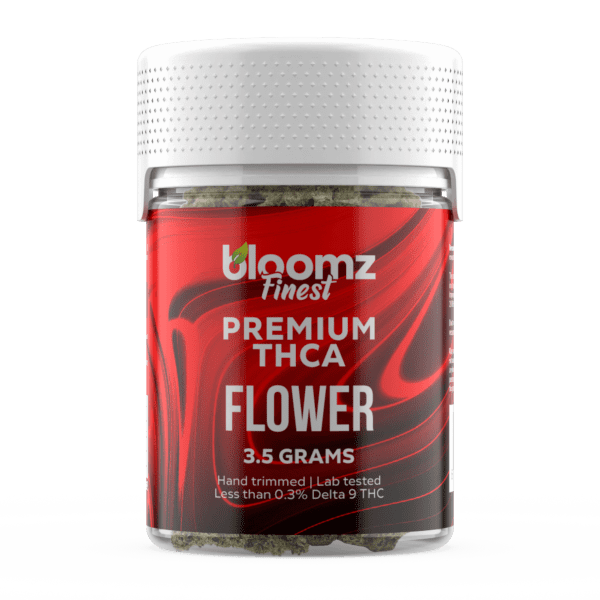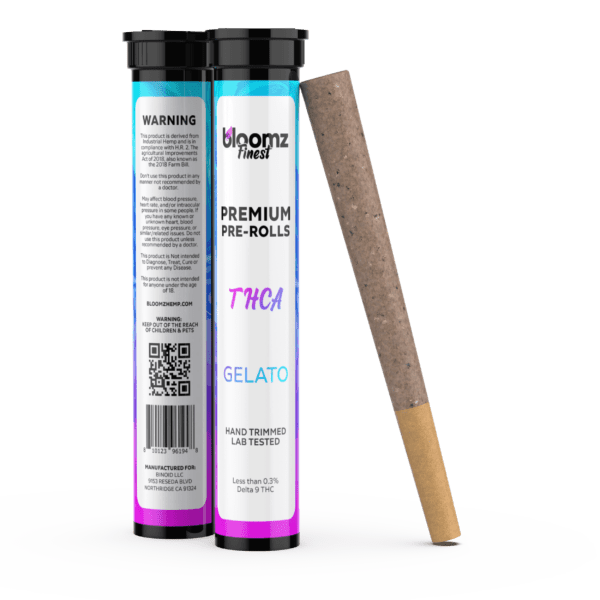In the vast and verdant world of botanicals, humanity has long sought out plants that alter perception, soothe the spirit, and bring people together. Today, two remarkable contenders stand at a fascinating crossroads of ancient tradition and modern innovation. From one corner of the globe comes THCA flower, which’s a product of sophisticated cannabis cultivation that leverages a legal loophole to deliver a classic, potent experience cherished for generations. It is the raw, untamed essence of cannabis, waiting for a spark to unlock its profound potential.
From the sun-drenched islands of the South Pacific comes Kava, a humble root with a 3,000-year-old legacy of fostering community, calming minds, and playing a central role in sacred ceremony. This is not a contest of equals, but a compelling comparison of two entirely different philosophies of botanical use: one offering a journey into the vibrant landscapes of the mind, the other a grounding anchor in serene, clear-headed tranquility.
To Buy THCA Flower Click Here
Recommended products
-
THCA Flower – Indoor Exotics – Gold Line
$37.99$69.99 -
THCA Flower – Platinum Line
$49.99$79.99 -
THCA Flower – Mystery Reserve
$41.99$79.99 -
THCA Smalls
$149.99$256.99
Why It’s Important to Breakdown the Matchup of THCA Flower vs. Kava
In a marketplace brimming with options for relaxation and mood enhancement, the distinction between THCA flower and Kava could not be more profound. A detailed breakdown of this matchup is essential for any individual seeking to make a conscious and informed choice about the botanicals they welcome into their life. These two substances hail from different worlds, operate on different biological principles, and foster vastly different social and personal experiences.
To conflate them or to choose between them without a deep understanding of their unique characteristics would be a disservice to both the user and the rich traditions from which these plants emerge. Examining their differences illuminates the diverse ways nature can interact with our consciousness.
This careful comparison serves to empower the consumer by shedding light on several crucial aspects that define the experience of each botanical:
-
Contrasting Cultural Heritages: THCA flower is a very modern phenomenon, a direct result of scientific understanding and nuanced legal frameworks in Western society. Kava, on the other hand, is an ancient cornerstone of Pacific Islander culture, steeped in thousands of years of ceremonial, social, and spiritual significance. Understanding this contrast is key to appreciating the context in which each is used—one often for personal recreation or introspection, the other for communal bonding and ritual.
-
Fundamentally Different Chemical Actions: The effects of these plants are driven by entirely different classes of active compounds. THCA flower’s potential is unlocked through the cannabinoid THCA, which converts to the psychoactive Delta 9 THC and interacts with the body’s endocannabinoid system. Kava owes its effects to a group of compounds called kavalactones, which interact with different signaling pathways in the brain to produce a state of calm without the significant cognitive alteration associated with THC. This chemical divergence is the primary reason for their vastly different effects.
-
Defining the Nature of the Experience: Perhaps the most important point of comparison is the subjective experience. THCA flower, when heated, is unequivocally psychoactive, altering sensory perception, thought patterns, and the experience of time. Kava, conversely, is known for inducing a state of deep relaxation and mental calm while preserving, and sometimes even sharpening, mental clarity. Choosing between them is choosing between a journey of altered consciousness and a journey into profound, clear-headed serenity.
-
Navigating Legal and Social Landscapes: While both are generally accessible, they exist in different legal and social spheres. THCA flower occupies a legal gray area, dependent on a specific interpretation of federal hemp law that is challenged by some states. Kava is broadly legal in the United States as a dietary supplement and is gaining mainstream acceptance through the rise of trendy Kava bars. Understanding these legal and social dynamics is crucial for responsible and worry-free consumption.
Contender #1: THCA Flower
Emerging from the rich and complex world of cannabis cultivation, THCA flower has swiftly risen as a major player, capturing the fascination of connoisseurs and the legally savvy alike. It represents a remarkable intersection of botanical science and legislative interpretation, offering an authentic cannabis experience that operates within the unique framework of federal hemp laws. This contender is not a synthetic creation or a distant cousin of cannabis; it is the genuine article, cultivated with precision to highlight a specific, naturally occurring cannabinoid in its raw form.
The journey of THCA flower is one of tradition meeting innovation, where the age-old appreciation for the plant’s aromatic and potent buds is preserved through modern agricultural and legal strategies, presenting a familiar yet distinct option for adults across the nation.
Tetrahydrocannabinolic acid, or THCA, is the foundational building block from which the most well-known cannabinoid, Delta 9 THC, is born. In its natural state within the raw cannabis plant, THCA is a non-intoxicating compound, meaning it doesn’t produce the euphoric or mind-altering effects typically associated with marijuana. It exists in abundance within the crystalline trichomes—the tiny, glittering glands that coat the surface of the buds and leaves—patiently waiting for a catalyst to transform it.
This transformation process is known as decarboxylation, a scientific term for what happens when you apply heat. When THCA is exposed to heat through methods like smoking, vaping, or baking, it loses a carboxyl group (COOH) and converts into the celebrated Delta 9 THC, unlocking the powerful effects that have made cannabis famous for millennia. The brilliance of THCA lies in this dual nature: inert and non-intoxicating in its raw form, yet capable of becoming potently psychoactive with a simple spark.
Recommended THCA products
So then, THCA flower is cannabis flower that has been selectively bred and cultivated to produce high concentrations of THCA while keeping its Delta 9 THC levels at or below the 0.3% threshold mandated by the 2018 Farm Bill for legal hemp. This legal distinction is the entire basis for its existence in the mainstream market. Farmers achieve this by carefully selecting genetics that naturally favor THCA production and by harvesting the plants at the precise moment when THCA content is at its peak, before it has had a chance to naturally degrade into Delta 9 THC over time. The production of high-quality, compliant THCA flower is a meticulous art and science that involves several key stages to ensure both potency and legality:
-
Genetic Selection: The process begins with choosing the right cannabis genetics. Cultivators select strains known for their robust production of THCA and their inherent ability to remain low in Delta 9 THC throughout the growing cycle. This often involves extensive research and development, cross-breeding different cultivars to stabilize the desired chemical profile.
-
Precision Cultivation: The plants are grown in highly controlled environments, particularly for indoor varieties. Growers manage every variable, including light cycles, temperature, humidity, and nutrient delivery, to maximize the development of trichomes, where the THCA is stored. This careful cultivation pushes the plant to its full potential without triggering a premature conversion of THCA to Delta 9 THC.
-
Strategic Harvesting: Timing the harvest is absolutely critical. Growers monitor the cannabinoid levels of the plants closely. They must harvest before the natural degradation process or excessive exposure to light and heat can convert a significant amount of the THCA into Delta 9 THC, which would render the crop non-compliant and legally classified as marijuana.
-
Careful Drying and Curing: After harvesting, the flower is carefully dried and cured. This slow process is essential for preserving the delicate terpenes that give the flower its unique aroma and flavor, as well as for maintaining the integrity of the cannabinoids. Improper curing can degrade the THCA and ruin the quality of the final product, so this step is performed in cool, dark, and climate-controlled rooms over several weeks.
-
Third-Party Lab Testing: The final and most crucial step is comprehensive testing by an accredited third-party laboratory. These labs analyze the flower’s cannabinoid profile to confirm that the Delta 9 THC concentration is below the 0.3% legal limit by dry weight. This Certificate of Analysis (COA) is the consumer’s guarantee that the product is a legal hemp product under federal law.
The market for THCA flower is incredibly diverse, offering a wide array of types and categories to suit every preference and budget. This variety is a testament to the sophistication of modern cannabis cultivation and processing, allowing consumers to choose products based on their desired quality, potency, and convenience. From sun-kissed outdoor buds to meticulously crafted concentrates, the world of THCA flower is rich with options.
Understanding these different categories helps consumers navigate the market and find the perfect product to match their needs, whether they prioritize aroma, strength, or ease of use. Each type offers a unique experience rooted in its specific method of cultivation and preparation:
-
Indoor THCA Flower: Considered the gold standard by many connoisseurs, indoor-grown THCA flower is cultivated in completely controlled environments. This method gives growers god-like control over every aspect of the plant’s life, from the exact spectrum of light it receives to the precise humidity and CO2 levels in the air. The result is typically a visually stunning product with dense, perfectly formed buds, a thick coating of crystalline trichomes, and an intensely pungent aroma. Indoor flower often commands a higher price due to the significant energy and infrastructure costs involved, but for those seeking maximum potency and the most vibrant terpene profiles, it is often considered the pinnacle of quality.
-
Outdoor THCA Flower: Grown under the natural sun, outdoor THCA flower embodies a more traditional and sustainable approach to cultivation. These plants grow larger and produce buds that can be less dense than their indoor counterparts, but they often possess a unique and complex character influenced by the natural terroir—the soil, climate, and environment in which they were grown. While sometimes less visually perfect, high-quality outdoor flower can offer a rich, full-bodied flavor profile and robust effects. It is also generally more affordable, making it an excellent choice for budget-conscious consumers who appreciate a more rustic, sun-grown product.
-
THCA Smalls: This category refers not to a specific growing method but to the size of the buds. “Smalls” are smaller, pea-sized or popcorn-sized nuggets of flower that are often separated from the larger, premium colas during the trimming and sorting process. They come from the same high-quality plants as the larger buds and possess the same potency and terpene profile, but are offered at a lower price point due to their less commanding visual appeal. THCA smalls are a fantastic value proposition, providing access to top-shelf genetics without the premium price tag of the top colas.
-
THCA Nugs: “Nugs” is a colloquial term for the standard, trimmed buds of the cannabis plant. This is the most common form in which THCA flower is sold. These are the well-formed, manicured pieces of flower that represent the main harvest of the plant’s colas (the large clusters of buds at the top of the plant). The quality can range from outdoor to top-shelf indoor, but the term itself simply refers to the classic, ready-to-use form of the flower that most people picture when they think of cannabis.
-
THCA Snowballs/Snow Caps: This is a more specialized and potent category of THCA flower. A THCA Snowball starts as a premium bud of THCA flower that is then coated in or rolled in pure THCA isolate, a crystalline powder that is nearly 100% pure THCA. This process dramatically increases the overall THCA content of the flower, giving it a unique, frosted or “snow-dusted” appearance. The resulting product is incredibly potent and is intended for experienced users seeking a particularly powerful effect upon decarboxylation.
-
THCA Moonrocks: Taking the concept of infused flower a step further, THCA Moonrocks are a trifecta of potency. They are created by taking a high-quality nug of THCA flower, coating it in a sticky cannabis concentrate or oil (often one that is also high in THCA), and then rolling the entire sticky concoction in a generous layer of kief (the collected trichomes from cannabis flower). The result is a dense, heavy, and extraordinarily potent product that is best consumed by breaking it apart and smoking it in a bowl or pipe, as it can be too sticky for grinders.
-
THCA Pre-Rolls, Blunts & Joints: For consumers seeking ultimate convenience, the market offers a wide array of pre-prepared smokable options. THCA Pre-Rolls or Joints consist of ground THCA flower rolled in a thin paper, often with a filter tip. THCA Blunts are similar but use a larger wrap made from tobacco leaves or hemp, which can impart its own unique flavor and a slower burn. These products eliminate the need for grinding, rolling, or packing, offering a grab-and-go solution that is perfect for social settings or for those who prefer not to handle the flower directly.
-
Exotic THCA Flower: The term “Exotic” typically refers to rare, highly sought-after, and genetically unique strains. These are often the result of extensive breeding projects by master cultivators, resulting in novel combinations of color, aroma, flavor, and bud structure. An exotic strain might feature deep purple or bright orange hues, smell of tropical fruits or sweet desserts, and have a density and trichome coverage that sets it apart from more common varieties. They are prized for their uniqueness and complex terpene profiles.
-
AA Exotic THCA Flower: In the informal grading system used by many enthusiasts and dispensaries, “AA” represents a mid-grade flower. It’s a solid, enjoyable product, but it may lack the visual “bag appeal” of higher grades. The buds might be slightly less dense, the trim a little less perfect, or the aroma not quite as pungent. It’s often a reliable and affordable option that gets the job done without the bells and whistles of the top-shelf tiers.
-
AAA Exotic THCA Flower: “AAA,” or “trips,” is considered the standard for high-quality cannabis. This flower exhibits all the desirable characteristics: good bud density, a visible and generous coating of trichomes, a strong and pleasant aroma, and a clean trim. It represents a well-grown, potent product that will satisfy the vast majority of consumers. Most of the reputable flower on the market falls into this or the subsequent category.
-
AAAA Exotic THCA Flower: “AAAA,” also known as “quads,” represents the pinnacle of cannabis cultivation—the true top-shelf. This flower is virtually flawless. It features rock-hard, dense buds that are meticulously trimmed, an overwhelming and complex terpene profile that fills the room, and a layer of trichomes so thick that the flower sparkles under the light. The colors are vibrant, the structure is perfect, and the overall experience is considered the best of the best, commanding the highest price and offering the most premium experience.
Just as important as the type or grade of the THCA flower is the specific strain, which dictates the nuanced effects, aromas, and flavors of the experience. The cannabis world is broadly categorized into three primary strain types: Indica, Sativa, and Hybrid. These classifications have long been used to help consumers predict the kind of journey a particular flower will take them on. While modern science suggests that the true effects are more closely tied to a strain’s unique profile of cannabinoids and terpenes, these categories remain an incredibly useful and widely understood shorthand for describing the general character of a flower, guiding users toward the experience that best suits their mood and occasion.
Each category represents a different branch of the cannabis family tree, with distinct physical characteristics and a legacy of producing certain types of effects:
-
Indica: Traditionally originating from the hash-producing regions of the world like Afghanistan, Pakistan, and India, Indica plants are known for their distinct physical traits. They are typically short, bushy, and dense, with wide, broad leaves of a deep green color. In terms of their effects, Indica strains have a strong reputation for producing profoundly relaxing and sedating experiences. They are often described as providing a “body high,” a feeling of deep physical ease and tranquility that can make you feel heavy, calm, and “chilled out.” These qualities make Indica THCA flower strains a popular choice for evening use, for unwinding after a long day, or for quiet activities like watching a movie or listening to music. Common terpenes found in Indica strains, such as myrcene, caryophyllene, and linalool, are thought to contribute to their classic soothing and calming aromatic profiles.
-
Sativa: Sativa strains hail from the equatorial regions of the world, including Southeast Asia, Africa, and Central America. In contrast to Indicas, Sativa plants grow tall and lanky, with thin, narrow leaves of a lighter green hue. Their effects are often considered the polar opposite of Indicas. Sativa strains are renowned for their energizing, uplifting, and cerebral effects, often described as a “head high.” Users frequently report feelings of euphoria, creativity, and focus, making Sativas a go-to choice for daytime activities, social gatherings, creative projects, or any situation where an energetic and positive mindset is desired. The terpene profiles of Sativa strains are often dominated by compounds like limonene, pinene, and terpinolene, which contribute to their characteristic bright, citrusy, and piney aromas.
-
Hybrid: As the name implies, Hybrid strains are created by cross-breeding Indica and Sativa plants. This practice has become the backbone of modern cannabis cultivation, allowing breeders to create new strains that combine the most desirable traits from both sides of the genetic spectrum. Hybrids can be Indica-dominant, Sativa-dominant, or a balanced 50/50 mix, resulting in an incredibly vast and nuanced range of potential effects. For example, an Indica-dominant hybrid might offer deep relaxation without being overly sedating, while a Sativa-dominant hybrid could provide an uplifting cerebral buzz tempered with a pleasant sense of bodily ease. Hybrids offer the best of both worlds, and their goal is to fine-tune the user experience, creating strains that are perfectly tailored for specific desires and occasions.
The legality of THCA flower in the United States is a fascinating and complex subject, rooted entirely in the language of the 2018 Agriculture Improvement Act, more commonly known as the 2018 Farm Bill. This landmark piece of federal legislation officially descheduled hemp from the Controlled Substances Act, creating a legal distinction between hemp and marijuana for the first time in modern history. The bill defined legal hemp as any part of the Cannabis sativa L. plant, including its derivatives, extracts, and cannabinoids, with a Delta 9 THC concentration of not more than 0.3% on a dry weight basis. This specific wording is the key that unlocked the door for THCA flower. Because THCA is not Delta 9 THC, flower that is rich in THCA but contains less than 0.3% Delta 9 THC meets the federal definition of legal hemp.
This allows it to be legally cultivated, sold, and possessed at the federal level. However, the situation becomes more complicated at the state level. While it is federally compliant, some states have enacted their own laws that take a different approach. These states have adopted “total THC” testing requirements, which mandate that the potential amount of Delta 9 THC (calculated by adding the existing Delta 9 THC to the amount that could be created from the THCA) must be below 0.3%. This effectively bans THCA flower in those jurisdictions. As a result, the legality of THCA flower exists in a gray area, where it is permissible in many states but explicitly illegal in others, creating a patchwork of regulations across the country that consumers must carefully navigate.
The versatility of THCA flower is one of its most appealing attributes, offering users a variety of ways to enjoy its potential. The chosen method of consumption directly impacts the experience, from the onset and duration of the effects to the flavor and overall character of the session. Each method utilizes the principle of decarboxylation to convert the THCA into Delta 9 THC, but they do so in distinct ways. Whether you prefer the classic ritual of smoking, the flavor-forward experience of vaping, or the long-lasting journey of edibles, THCA flower can be adapted to suit your preferences. This flexibility allows users to tailor their consumption to their lifestyle, desired level of discretion, and the specific kind of experience they are hoping to achieve:
-
Vaping (using a portable or desktop vaporizer): Vaping has become an immensely popular consumption method for its efficiency and flavor preservation. A dry herb vaporizer works by heating the THCA flower to a precise temperature, hot enough to activate and vaporize the cannabinoids and terpenes but below the point of combustion. This process, known as convection or conduction heating, effectively decarboxylates the THCA into Delta 9 THC without creating smoke. The resulting vapor is smoother and less harsh on the lungs than smoke and allows the user to taste the full, nuanced flavor profile of the strain’s terpenes. Vaping is also more discreet, as the vapor produced has a much lighter, less lingering aroma than smoke.
-
Smoking: This is the most traditional and straightforward method of consuming cannabis. It involves combusting the flower in a pipe, bong, joint, or blunt. The intense heat from the flame causes instantaneous decarboxylation, converting the THCA into Delta 9 THC, which is then inhaled through the smoke. Smoking provides immediate effects and is a deeply ingrained ritual for many longtime cannabis enthusiasts. While it is highly effective, the combustion process does destroy some of the delicate terpenes, which can alter the flavor, and the smoke itself contains tar and other byproducts that can be harsh on the respiratory system.
-
Cooking/Baking: For those who prefer not to inhale their botanicals, THCA flower can be used to create potent and long-lasting edibles. However, you cannot simply add raw flower to a recipe. The flower must first be decarboxylated. This is typically done by grinding the flower and baking it on a cookie sheet in an oven at a low temperature (around 220-240°F) for 30-40 minutes. This controlled heating converts the THCA into active Delta 9 THC. After decarboxylation, the activated flower is infused into a fat, such as butter or coconut oil, which can then be used in any recipe to make homemade edibles. When consumed, the effects are much stronger and last significantly longer than when inhaled, but they also take much longer to kick in, typically 45 minutes to 2 hours.
Once heated, THCA flower delivers effects that are indistinguishable from those of traditional marijuana, because chemically, the active compound becomes the exact same: Delta 9 THC. The experience it produces is multifaceted and can vary dramatically depending on several key factors, including the specific strain’s cannabinoid and terpene profile, the dosage consumed, the user’s individual tolerance and body chemistry, and the environment in which it is used. Generally, users can expect a significant shift in consciousness and perception.
This often includes a powerful sense of euphoria, a feeling of lightheartedness and bliss that can lead to laughter and an elevated mood. Many also report heightened sensory perception, where colors may seem more vibrant, sounds more profound, and food more delicious. Time perception can become distorted, with minutes feeling like hours, and short-term memory may be temporarily impaired. Depending on the strain, the effects can be deeply relaxing, leading to a “couch-lock” state of serene immobility, or they can be cerebrally stimulating, sparking creativity, introspection, and energetic sociability. The journey is uniquely personal, but it is consistently characterized by a potent departure from one’s ordinary state of mind.
Pros & Cons
Like any botanical product, THCA flower comes with its own unique set of advantages and potential drawbacks. Evaluating these pros and cons is a crucial step for anyone considering this contender, as it provides a balanced perspective that goes beyond the initial allure. These points highlight its strengths in areas like legality and authenticity while also acknowledging the challenges related to its legal complexity and practical considerations of use.
Pros:
-
Federal Legal Accessibility: The most significant advantage of THCA flower is its legal status under the 2018 Farm Bill. By containing less than 0.3% Delta 9 THC, it is classified as hemp, allowing it to be legally shipped to and sold in many states where recreational cannabis is not yet legal. This provides a pathway for individuals in those regions to access high-potency cannabis flower through a legally recognized channel, opening up a world of possibilities that were previously unavailable to them without violating state laws.
-
A Familiar and Authentic Experience: For those who appreciate the classic cannabis experience, THCA flower delivers in spades. Because it converts directly into Delta 9 THC upon heating, the effects are virtually identical to those of traditional marijuana. This is not a synthetic cannabinoid or a different analogue with subtly altered effects; it is the real deal, providing the authentic aroma, taste, and psychoactive journey that cannabis is known for, ensuring users receive the genuine experience they are seeking without any guesswork.
-
Expansive Strain and Product Variety: The THCA flower market is a direct beneficiary of decades of sophisticated cannabis breeding. This means consumers have access to an enormous library of legendary and exotic strains, each with its own unique terpene profile and nuanced effects. From classic Indicas and Sativas to a near-infinite array of complex Hybrids, the level of choice is staggering. This allows users to fine-tune their experience with incredible precision, selecting a strain that perfectly matches their desired mood or activity.
-
Control Over Psychoactive Activation: The two-stage nature of THCA offers a unique form of control. In its raw, unheated state, the flower is non-psychoactive and is being explored for its own set of properties. A user could, for instance, juice raw cannabis leaves for their potential wellness benefits without any intoxicating effects. The psychoactivity is entirely dependent on the user’s choice to apply heat through smoking, vaping, or cooking, giving them complete and direct control over when and if they wish to activate the flower’s potent potential.
-
Diverse Consumption Methods: THCA flower is incredibly versatile, lending itself to a wide range of consumption methods that cater to every possible preference. Whether one enjoys the classic ritual of smoking a joint, the clean and flavorful experience of vaping, the discretion and convenience of packing a one-hitter, or the long-lasting journey provided by homemade edibles, THCA flower can do it all. This adaptability ensures that virtually anyone can find a method of consumption that they are comfortable and familiar with.
-
Rich and Complex Terpene Profiles: Reputable growers of THCA flower place a heavy emphasis on preserving the plant’s natural terpenes, the aromatic compounds responsible for its distinct flavors and smells. These terpenes do more than just provide a pleasant sensory experience; they also contribute to the “entourage effect,” working synergistically with cannabinoids to modulate and enhance the overall experience. A high-quality THCA flower will offer a complex bouquet of aromas, from pine and citrus to berry and diesel, which is a hallmark of a well-cultivated and carefully cured product.
-
Established Industry Standards and Testing: Because it operates within the legal hemp industry, the THCA flower market benefits from a growing infrastructure of accountability. Reputable brands provide comprehensive third-party lab reports, known as Certificates of Analysis (COAs), for their products. These reports verify the cannabinoid potency, confirm legal compliance, and screen for harmful contaminants like pesticides, heavy metals, and molds, offering consumers a level of transparency and safety assurance that is crucial for peace of mind.
-
Rapid Onset of Effects via Inhalation: When THCA flower is smoked or vaped, the effects are felt almost instantaneously, typically within minutes. This rapid onset allows users to carefully manage their experience by taking a small amount and waiting to see how they feel before consuming more. This immediate feedback loop makes it much easier to find the right dosage and avoid the common pitfall of overconsumption, which can sometimes happen with the delayed onset of edibles.
-
Social and Communal Aspect: Cannabis has a long and storied history as a social lubricant, and THCA flower continues this tradition. The rituals associated with its consumption—sharing a joint among friends, gathering around a table to pack a bowl, or simply enjoying a relaxed conversation in an altered state—are deeply ingrained in cultural practice. It can serve as a catalyst for bonding, laughter, and shared experiences, fostering a sense of community and connection among users in a way that is both timeless and profound.
-
Potential for Precise Dosing with Technology: The advent of sophisticated dry herb vaporizers has brought a new level of precision to consuming flower. Many modern vaporizers allow for exact temperature control, which can be used to target specific cannabinoids and terpenes that vaporize at different boiling points. This technological advancement allows discerning users to experiment with temperature settings to subtly alter the effects of their flower, potentially emphasizing certain desirable qualities while minimizing others, offering a highly customizable and repeatable experience.
Cons:
-
Complicated and Shifting Legal Landscape: The primary disadvantage of THCA flower is the precarious nature of its legality. While it may be federally compliant under the 2018 Farm Bill’s definition of hemp, many states have taken a different view, implementing “total THC” laws that effectively ban the product. This creates a confusing patchwork of regulations that can change rapidly, placing the onus on the consumer to constantly stay informed about their local laws. There is also the risk that a future federal ruling or legislative change could close the loophole that allows it to exist.
-
Risk of Overconsumption and Intense Effects: Because THCA flower converts into potent Delta 9 THC, there is a significant risk of overconsumption, especially for novice users or those with a low tolerance. The experience can be intensely psychoactive, and taking too much can lead to feelings of unease, paranoia, or overwhelming physical sensations. The sheer potency of modern, high-THCA strains requires a responsible and cautious approach, starting with a very small amount and waiting to assess the effects before consuming more.
-
Distinct and Pungent Aroma: While cannabis connoisseurs may cherish the strong, skunky, or fruity aroma of high-quality flower, this same quality makes it far from discreet. The smell of burning or even fresh THCA flower is potent and easily recognizable, which can be a major drawback for individuals who need to be mindful of their neighbors, live in shared housing, or simply wish to keep their consumption private. This lack of discretion can limit the situations in which it can be comfortably used.
-
Misleading Product Labeling and Quality Variance: In a rapidly growing and not-yet-fully-regulated market, the quality and accuracy of THCA flower products can vary wildly between vendors. Less scrupulous companies might misrepresent the potency of their flower, use outdated lab reports, or sell poorly grown and cured products. It is crucial for consumers to do their due diligence, purchasing only from highly reputable brands that provide transparent, up-to-date, and comprehensive third-party lab testing to ensure they are getting a safe and accurately labeled product.
Contender #2: Kava
Our second contender, Kava, invites us on a journey to the tranquil, emerald islands of the South Pacific. Known to botanists as Piper methysticum, which translates to “intoxicating pepper,” this remarkable plant is not a fleeting trend but an ancient tradition, deeply rooted in the cultures of Oceania for millennia. Unlike cannabis, where the flower is prized, the power of Kava resides in its root system. For thousands of years, the people of Vanuatu, Fiji, Tonga, and Hawaii have prepared these roots into a ceremonial beverage that fosters communication, eases tensions, and strengthens community bonds. Kava enters the modern botanical arena not as a product of legal maneuvering, but as a cultural ambassador, offering a unique form of profound relaxation that stands in stark contrast to the psychoactivity of THCA flower.
At its core, Kava is a tropical shrub belonging to the pepper family, a relative of the common black pepper that seasons our food. The magic of the plant is concentrated in its roots, which contain a unique class of active compounds known as kavalactones. There are at least 18 different kavalactones that have been identified, with six of them—including kavain, dihydrokavain, and methysticin—being responsible for the majority of Kava’s signature effects. These compounds work in a complex synergy to produce a sense of calm, muscle relaxation, and well-being.
They are believed to interact with various neurotransmitter systems in the brain, including GABA pathways, in a way that quiets mental chatter and soothes the body. Critically, it is important to distinguish between “noble” and “tudei” Kava. Noble Kava varieties are those that have been cultivated over centuries for daily consumption, producing desirable effects with minimal negative side effects. Tudei (“two-day”) Kava is a wilder, more potent variety that is not traditionally consumed and is associated with more unpleasant, long-lasting effects. The global standard for quality and safety is to use only the roots of noble Kava.
The story of Kava is an epic that begins approximately 3,000 years ago in the volcanic archipelago of Vanuatu, which is widely considered to be its place of origin. From there, ancient seafaring Polynesians and Micronesians carried this sacred plant with them on their incredible voyages across the vast Pacific, introducing it to islands like Fiji, Samoa, Tonga, and Hawaii. In these societies, Kava—known as ‘awa in Hawaii and ‘ava in Samoa—became far more than just a relaxing beverage; it became the very heart of their social and spiritual lives. It was, and still is, prepared and consumed in solemn ceremonies to welcome honored guests, to negotiate treaties and resolve conflicts between villages, to inaugurate new chiefs, and to connect with the ancestral world.
The preparation itself is a ritual, traditionally involving the grinding or pounding of the root and mixing it with water. The communal drinking from a shared bowl, or tanoa, reinforces bonds of kinship and hospitality. European explorers, such as Captain James Cook in the 18th century, were among the first Westerners to document this profound tradition. Only in the last few decades has Kava journeyed beyond the Pacific, finding a new home in the West, most notably through the recent emergence of dedicated Kava bars that seek to replicate the plant’s communal and relaxing spirit.
Just as cannabis is known by its strains, Kava is distinguished by its geographical origin and the specific cultivars, or varieties, grown in those regions. The unique combination of a region’s volcanic soil, climate, and centuries of cultivation practices imparts a distinct character and kavalactone profile to the root. This results in Kavas that can have noticeably different effects, with some being more uplifting and cerebral (“heady”) and others being more profoundly relaxing and sedating (“heavy”). Exploring these regional varieties is a key part of the Kava journey, allowing enthusiasts to find the perfect cultivar to match their desired mood and social setting:
-
Vanuatu Kava: As the ancestral homeland of Kava, Vanuatu boasts the most diverse and potent varieties in the world. The Kava culture here is deeply ingrained in daily life, and the country has strict laws to protect the quality and export of only noble cultivars. Vanuatu Kavas, such as the famous Borogu or Melomelo, are renowned for being extremely potent and typically “heavy.” They produce profound muscle relaxation and a deep sense of calm that is ideal for unwinding in the evening and achieving a state of blissful tranquility.
-
Fijian Kava: Fiji is perhaps the most well-known producer of Kava for the international market. Fijian Kava, often made from the potent lateral roots known as “waka,” is celebrated for its balanced effects. It tends to be less sedating than the heaviest Vanuatu Kavas, offering a pleasant combination of mental relaxation and a gentle mood lift. This makes it a versatile choice, perfect for the solemnity of a traditional ceremony or a casual evening of conversation with friends.
-
Hawaiian Kava (‘Awa): In Hawaii, Kava is known as ‘Awa and holds deep spiritual significance within traditional Hawaiian culture. For centuries, it was used by kahuna (priests and experts) for prayer and to achieve states of inspired insight. Hawaiian cultivars, like the legendary Mahakea and Mo’i, are often described as being more “heady” than their counterparts from the South Pacific. They are known for producing a more cerebral and uplifting experience, promoting creativity and happy feelings while still providing a gentle bodily relaxation.
-
Samoan Kava (‘Ava): In Samoa, ‘Ava plays a crucial role in the highly structured fa’amatai chief system. The ‘Ava ceremony is a formal and solemn event that is central to Samoan cultural identity, used during important political, business, and family gatherings. Samoan Kava is typically well-balanced, fostering the calm and respectful demeanor required for these important occasions, making it an excellent social lubricant that encourages thoughtful dialogue.
-
Tongan Kava: Tongan Kava is often considered the most sociable of the regional varieties. It is typically milder in its effects compared to Kava from Vanuatu or Fiji, making it perfectly suited for long sessions of social drinking. In Tonga, groups of men often gather in kalapu (Kava clubs) to drink Kava for hours, talking, telling stories, and playing music. Its gentle, mood-lifting qualities make it the perfect accompaniment for fostering camaraderie and strengthening community bonds without being overwhelming.
The modern Kava market has evolved to offer a wide array of product types, making this ancient root accessible to a broad audience with varying preferences for convenience, taste, and preparation. While the traditional method of kneading ground root in water remains the gold standard for many purists, contemporary innovations have removed some of the barriers to entry, such as the time-consuming preparation process and the plant’s distinctively earthy flavor. This diversification allows newcomers and veterans alike to incorporate Kava into their lives in a way that fits their personal routines and tastes:
-
Powder: This is the most traditional form available outside of the Pacific Islands. The dried Kava root is ground into a powder, which is typically a “medium grind” consistency. This powder is not meant to be dissolved but rather steeped and kneaded in a bag of cold water to extract the oily kavalactones, creating the final beverage. For greater convenience, “micronized” and “instant” powders are also available. Micronized powder has been ground so finely that it can be mixed directly into a liquid, while instant Kava is a dehydrated beverage that dissolves completely, offering the easiest preparation.
-
Capsules & Tablets: For ultimate convenience and to completely bypass the taste, Kava is available in encapsulated powder or tablet form. These products offer a pre-measured dose and can be taken discreetly like any other supplement. However, the effects from capsules are often reported to be less pronounced than those from a traditionally prepared beverage, as the dosage is typically lower and the absorption process through the digestive system may be less efficient.
-
Gummies: Riding the wave of popularity for gummy supplements, Kava gummies are a new and user-friendly way to enjoy the plant’s benefits. These are infused with a specific amount of Kava extract and are flavored to mask the root’s peppery, earthy taste. Gummies are an excellent entry point for those curious about Kava, offering a familiar format, precise dosing, and a more palatable experience.
-
Drinks/Beverages/Shots: Capitalizing on the growing demand for relaxing alternatives to alcohol, ready-to-drink Kava products have become increasingly popular. These range from small, concentrated Kava shots to larger, canned Kava-infused seltzers and tonics. They are made with Kava extract and are often blended with other botanical ingredients and natural flavors, providing a quick, convenient, and often tasty way to enjoy Kava’s effects on the go.
-
Disposable Vape Pens: The concept of inhaling Kava through a vape pen is a very recent and highly controversial development. While some products are emerging that claim to vaporize kavalactones, this method is not traditional and its safety and effectiveness are largely unknown. There is no scientific research on the effects of inhaling heated kavalactones, and most Kava enthusiasts and safety advocates strongly advise against this method in favor of traditional oral consumption.
-
Tinctures & Extracts: Kava tinctures and extracts are highly concentrated liquid forms of the plant’s active compounds. Created by extracting the kavalactones from the root using a solvent like ethanol or CO2, these products are very potent. They offer the ability to take a strong dose in a small volume, and they can be added to other beverages. However, their potency requires extremely careful dosing to avoid uncomfortable effects, and they are generally recommended for experienced users who understand their own sensitivity to Kava.
-
Topicals: While not for internal consumption, Kava extract is also being incorporated into topical products like creams, lotions, and balms. The kavalactones are believed to have muscle-relaxing properties that can be absorbed through the skin. These topicals are used to target specific areas of the body, offering localized soothing and relaxation to tired muscles without producing any of the cerebral effects associated with drinking Kava.
Recommended products
A fascinating trend in the contemporary botanical market is the fusion of different plant-based compounds to create synergistic effects, and the combination of Kava with cannabinoids is at the forefront of this movement. Many companies are now creating products that blend Kava extract with various cannabinoids derived from the hemp plant, such as CBD, CBN, CBG, and even psychoactive ones like Delta 8 THC. The theory behind these formulations is that the different compounds can complement and enhance one another’s properties.
For instance, the well-known calming and soothing qualities of CBD might work in harmony with the muscle-relaxing and mind-quieting effects of kavalactones, potentially leading to a more profound and holistic state of relaxation. Similarly, combining Kava with a sleep-promoting cannabinoid like CBN could create a powerful nighttime blend for those seeking deep and restful slumber. These innovative products offer a curated experience that aims to deliver the best of both worlds, targeting specific desired states with a multi-pronged botanical approach.
While combination products offer a pre-formulated experience, many individuals prefer to combine Kava with different strains of cannabis flower in a more traditional, separate manner. This practice allows the user to act as their own alchemist, fine-tuning the experience by pairing the grounding effects of Kava with the unique psychoactive and aromatic profiles of their chosen cannabis strain. The interaction between the kavalactones and the specific blend of cannabinoids and terpenes in the flower can lead to unique and nuanced states of being. The choice of strain, like these ones below, becomes paramount, as each will paint the canvas of Kava’s calm with a different palette of colors, moods, and sensations:
-
Sativa: Combining Kava with an uplifting and energetic Sativa strain creates an intriguing dynamic. The Kava can provide a calm, centered base, potentially smoothing out the racier or more mentally intense aspects that some Sativa strains can produce. This pairing could lead to a state of being that is both mentally alert and creative, yet physically relaxed and free from restlessness. It might be an ideal combination for engaging in a creative project, deep conversation, or enjoying music with a focused but serene mindset.
-
Indica: Pairing Kava with a deeply relaxing Indica strain is a recipe for profound tranquility and physical ease. This combination is a powerful duo for deep relaxation, as the muscle-soothing properties of Kava are amplified by the classic “body high” effects of a strong Indica. This pairing is best reserved for the end of the day, as it can lead to a very sedating, “chilled out” experience that is perfect for watching a movie, listening to calming music, or preparing for a peaceful night’s sleep.
-
Hybrid: Using a balanced Hybrid strain alongside Kava offers a middle path, capturing the best attributes of both ends of the cannabis spectrum. A well-balanced hybrid can provide a sense of euphoria and mental uplift without being overly stimulating, which complements Kava’s mood-lifting qualities beautifully. The result can be a wonderfully blissful and grounded experience, a state of happy contentment where both mind and body are at peace. This versatile combination is suitable for a wide range of low-key recreational activities.
In the United States, the legal status of Kava is relatively straightforward and stable, especially when compared to the complex and shifting landscape of cannabis products. Kava is federally legal and is classified and sold as a dietary supplement. This means it can be legally bought, sold, and consumed in all 50 states without the need for a prescription. This legal clarity has allowed for the growth of a robust market, from online vendors specializing in imported Kava root to the burgeoning trend of Kava bars in cities across the country.
However, the industry is not without its history of regulatory scrutiny. In 2002, the FDA issued a consumer advisory regarding a potential risk of rare but severe liver injury associated with Kava-containing products. Subsequent research has largely attributed these concerns to the use of poor-quality Kava material, specifically the leaves and stems of the plant (tudei Kava) rather than the noble root, and the use of solvent-based extracts. In response, the reputable Kava industry has strongly advocated for the exclusive use of water-extracted, noble Kava root to ensure safety, a standard that has helped to reassure consumers and maintain its legal standing as a dietary supplement.
The overall effects of Kava are unique and are often described as being unlike any other botanical substance. The experience typically begins within minutes of consumption with a distinct tingling or numbing sensation in the mouth and throat, a harmless effect caused by the kavalactones that signals the root’s potency. As the effects set in, users report a wave of pleasant relaxation that washes over the body, soothing tired muscles and releasing physical tension. Mentally, the experience is one of pronounced calm and tranquility; the cyclical thoughts and worries of the day seem to quiet down, replaced by a sense of peaceful contentment.
A key and celebrated feature of Kava is that this deep relaxation is accompanied by a preservation, and sometimes even an enhancement, of mental clarity. Unlike alcohol, which can cloud judgment and slur speech, Kava allows for clear-headed and articulate conversation, making it an exceptional social lubricant. This is also why it has a reputation for fostering sociability and open dialogue. Another interesting aspect is the phenomenon of “reverse tolerance,” where new users may need to consume Kava several times before they begin to feel its full effects, after which they often become more sensitive to it.
Pros & Cons
Kava’s journey from a ceremonial root of the Pacific to a popular beverage in Western wellness circles comes with a distinct set of positive attributes and notable considerations. Understanding this balance is key to approaching Kava with the right expectations and respect. Its pros are deeply tied to its unique effects on sociability and mental clarity, while its cons are often related to its taste, preparation, and the importance of sourcing high-quality material.
Pros:
-
Widespread Legality and Social Acceptance: One of Kava’s strongest advantages is its clear legal status as a dietary supplement across the United States. This legality fosters a sense of security for consumers and has allowed for the growth of a welcoming and mainstream social scene. The rise of Kava bars provides a unique, alcohol-free environment for people to gather, socialize, and relax, which is a testament to its growing social acceptance as a legitimate and positive lifestyle choice.
-
Promotes Relaxation with Mental Clarity: The most celebrated benefit of Kava is its ability to induce deep physical and mental relaxation without compromising cognitive function. While the body feels calm and at ease, the mind remains clear, focused, and articulate. This unique combination makes Kava an excellent tool for unwinding without the fogginess or impairment that can accompany other relaxing substances, allowing for meaningful conversation and clear-headed introspection.
-
Rich Cultural and Ceremonial History: Kava is not a new invention; it is an ancient tradition steeped in 3,000 years of cultural significance. This long and storied history provides a deep context for its use, connecting modern consumers to the timeless human desire for community, peace, and spiritual connection. Engaging with Kava can be an educational and respectful way to participate in a tradition that has been cherished by Pacific Island cultures for countless generations.
-
Generally Considered Low-Risk for Dependence: When used responsibly in its traditional form, Kava is widely considered to have a very low potential for creating physical dependence. It does not produce the kind of compulsive redosing or escalating tolerance that is often associated with other substances. This favorable safety profile makes it a suitable choice for individuals seeking a relaxing botanical for occasional or moderate use without the significant concerns of habit formation.
-
Promotes Genuine Sociability: Kava is a powerful social lubricant. Its ability to lower inhibitions and quiet mental chatter without causing intoxication makes it exceptionally well-suited for fostering open and genuine communication. In a Kava circle or at a Kava bar, conversation tends to flow easily and thoughtfully. This makes it an outstanding alternative to alcohol for social gatherings where the goal is connection and camaraderie rather than loud revelry.
-
Diverse Range of Modern Consumption Methods: While traditional preparation can be a rewarding ritual, the modern market has made Kava accessible to everyone. The availability of instant powders, pre-measured capsules, flavored beverages, and gummies means that anyone can enjoy Kava’s effects regardless of their tolerance for its taste or their willingness to engage in the preparation process. This versatility ensures there is a Kava product to fit nearly any lifestyle.
-
Natural, Plant-Based Origin: For individuals who prefer botanicals in their natural state, Kava is an excellent choice. The final beverage, when traditionally prepared, is a simple water extraction of a raw, ground plant root. There are no complex chemical conversions or synthetic processes involved. This straightforward, earth-to-cup process appeals to many who seek a connection to simple, time-tested natural products.
Cons:
-
An Acquired and Often Unpleasant Taste: There is no sugar-coating the fact that traditionally prepared Kava has a very challenging flavor. Its taste is often described as earthy, peppery, and muddy, and it can be quite bitter. This strong and unusual flavor profile is the single biggest barrier to entry for new users. While it can be masked or bypassed with modern products, many purists believe that embracing the taste is part of the authentic Kava experience.
-
Traditional Preparation Can Be Cumbersome: To experience Kava in its most authentic and effective form, the traditional preparation method is recommended. This involves placing the ground root into a strainer bag, soaking it in a bowl of water, and then kneading and squeezing the bag for 10-15 minutes to extract the active kavalactones. While meditative for some, this process can be messy, time-consuming, and inconvenient for many people in a fast-paced modern lifestyle.
-
The “Reverse Tolerance” Phenomenon: A unique and sometimes frustrating aspect of Kava is “reverse tolerance.” Many first-time users report feeling little to no effect from the beverage, even at moderate doses. It can take several sessions over a number of days for the body to become sensitized to the kavalactones, after which the effects become much more pronounced. This can be discouraging for newcomers who are expecting immediate results.
-
Critical Importance of Quality Control: The Kava market is not all created equal, and the quality of the product is paramount for both safety and effects. It is crucial to source Kava from reputable vendors who only sell 100% noble Kava root and can provide third-party lab testing to prove it. The risk of accidentally consuming inferior “tudei” Kava, which can cause unpleasant side effects, or Kava contaminated with other parts of the plant, makes consumer diligence an absolute necessity.
-
Potential for Kava Dermopathy: With extremely heavy, long-term, daily consumption of Kava, a specific skin condition known as “kava dermopathy” can occur. This condition is characterized by dry, scaly, and sometimes flaky and yellowish skin. It is generally considered harmless and is reversible upon cessation or reduction of Kava use. While it is rare and only associated with very high levels of consumption, it is a known potential side effect of chronic, heavy use.
How to Go About Choosing Which Option
Selecting between THCA flower and Kava is a deeply personal decision that hinges on a variety of factors, from your local legal environment to the specific type of experience you’re seeking. There is no single “better” option; the right choice is the one that best aligns with your individual circumstances and preferences. Both botanicals offer unique pathways to relaxation and euphoria, but they travel those paths via entirely different mechanisms and come with distinctly different considerations. By carefully weighing these key factors, you can move past the hype and make a clear-headed, informed choice that suits your lifestyle.
The most critical question to ask yourself is what kind of mental state you are hoping to achieve. Are you looking for a potent, psychoactive experience that alters your sensory perception and delivers a powerful feeling of euphoria? If so, THCA flower is the clear choice. Its conversion to Delta 9 THC provides the classic cannabis high. Conversely, if you are seeking profound relaxation, a quiet mind, and a calm body while maintaining complete mental lucidity and the ability to think and converse clearly, then Kava is the more appropriate option. Your desired destination—altered consciousness versus serene clarity—is the primary fork in the road.
Next, consider the social context. THCA flower can be social, but its intense effects and strong aroma can sometimes make it better suited for solo use or small, intimate gatherings. Kava, by its very nature and cultural history, is a communal substance. It thrives in a social setting, actively promoting conversation and connection. If your goal is to find an alcohol alternative for social events, Kava is tailor-made for that purpose. Also, consider the practicalities of preparation and taste. Are you willing to engage in the ritual of grinding and smoking/vaping flower, or the process of kneading a Kava bowl? Or do you prefer the instant convenience of a Kava shot or a pre-roll? Your lifestyle and personal preferences in these areas will heavily influence which botanical is a more practical fit.
|
Feature |
THCA Flower |
Kava |
|---|---|---|
|
Primary Active Compound |
Tetrahydrocannabinolic Acid (THCA) |
Kavalactones |
|
Mechanism of Action |
Converts to Delta 9 THC upon heating; acts on cannabinoid receptors (CB1). |
Act on various neurotransmitter systems (e.g., GABA pathways). |
|
Legal Status |
Federally legal under the 2018 Farm Bill; illegal in states with “Total THC” laws. |
Federally legal as a dietary supplement; legal in all 50 states. |
|
Core Experience |
Intensely psychoactive, euphoric, and perception-altering. |
Deeply relaxing with preserved mental clarity; not psychoactive in the same way. |
|
Social Context |
Often used for personal recreation, introspection, or in small groups. |
Traditionally communal; excellent for social bonding and conversation. |
|
Taste Profile |
Aromatic and flavorful (terpenes); ranges from pine/citrus to earthy/sweet. |
Acquired taste; very earthy, peppery, and often considered unpleasant. |
|
Preparation |
Requires grinding; consumed via smoking, vaping, or cooking. |
Traditional prep involves kneading powder in water; instant options are available. |
|
Key Consideration |
Navigating a complex legal landscape and managing potent psychoactive effects. |
Sourcing high-quality noble root and overcoming the taste barrier. |
The Root and the Flower: A Choice of Paths
In the end, the dialogue between THCA flower and Kava is not about conflict, but about contrast and choice. One is not a substitute for the other; they are distinct botanical allies that offer different gifts. The flower invites you on a vibrant, vertical ascent into euphoria and altered perspectives, a journey for the mind’s eye. The root offers a grounding, horizontal expansion, connecting you more deeply to your body, your companions, and the present moment.
Choosing between them is a matter of deciding which direction you wish to travel. Whether seeking the celestial bliss of the flower or the terrestrial tranquility of the root, may your choice be an informed one that leads to your desired harbor of well-being.




